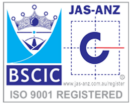Lean is a business philosophy that emphasizes efficiency, continuous improvement, and respect for people. This approach has been adopted by many companies worldwide and has been proven to increase productivity and reduce waste. Lean has its own set of terms and jargon that can confuse those unfamiliar with the system. In this post, we will provide a glossary of common Japanese terms to help you better understand the philosophy and how it is applied in practice.

5S is a Japanese methodology for organizing and maintaining a clean, efficient, and safe work environment. The five S’s stand for:
These terms are part of the 5S methodology, a foundational aspect of Lean practices aimed at organizing the workplace for efficiency, safety, and waste reduction. Here’s how each of them works in Lean practices:
整理 (Seiri)
Sort: This involves separating necessary items from unnecessary ones and removing the latter from the workplace. It helps in reducing clutter, making it easier to find what is needed quickly, and eliminating obstacles to smooth workflow. Workers sort through their workspaces, tools, and materials, keeping only what is essential for their tasks.
整頓 (Seiton)
Set in Order: Once unnecessary items are removed, the next step is to arrange the necessary items in a systematic and orderly manner. Every item has a designated place, and there is a logical flow to how things are organized. This promotes efficiency by minimizing the time spent searching for tools or materials, and it also helps in maintaining cleanliness.
清掃 (Seiso)
Shine: This step involves cleaning and inspecting the workplace regularly. It goes beyond just tidying up; it’s about maintaining a high level of cleanliness to identify and address any abnormalities or potential issues promptly. Cleanliness is not just for appearances but also for safety and quality.
清潔 (Seiketsu)
Standardize: Standardization ensures that the first three S’s (Sort, Set in Order, Shine) become ingrained habits and are consistently applied throughout the organization. Standardized processes, procedures, and visual controls are put in place to sustain the improvements made in the previous steps. This ensures that the workplace remains organized, clean, and efficient over time.
しつけ (Shitsuke)
Sustain: Sustaining the gains achieved through the first four steps is crucial for long-term success. It involves fostering a culture of continuous improvement and discipline among all employees. Regular training, audits, and feedback mechanisms help reinforce the 5S principles and ensure that they are practiced consistently. It becomes a part of the organization’s culture and mindset, leading to ongoing improvements in efficiency, quality, and safety.
This methodology is used in many organizations to reduce waste and improve efficiency by creating a well-organized and clean work environment. The five elements of 5S work together to create a work environment that is both visually appealing and functional, which helps to increase productivity and improve overall quality.
Concepts and practices in Lean manufacturing and management.
改革 (Kaikaku)
This term refers to “radical change” or “revolutionary change.” Unlike continuous improvement (Kaizen), Kaikaku involves making significant and transformative changes to existing processes or systems. It often requires a complete overhaul or redesign of workflows, methods, or systems to achieve substantial improvements in efficiency, quality, or productivity.
改善 (Kaizen)
Kaizen translates to “continuous improvement.” It’s a philosophy that encourages small, incremental changes over time to improve processes, products, or services. Kaizen involves everyone in the organization, from top management to frontline workers, and aims to create a culture of continuous learning and improvement.
看板 (Kanban)
Kanban is a visual signaling system used to manage the flow of materials or information within a production process. It typically involves using cards or other visual indicators to signal when more items need to be produced or when inventory needs to be replenished. Kanban helps to prevent overproduction, reduce inventory, and improve efficiency by ensuring that work is only done when there is demand for it.
水すまし (Mizusumashi)
Mizusumashi refers to the role of a material or supplies replenisher in a Lean manufacturing environment. The Mizusumashi ensures that materials and supplies are available at the right place, at the right time, and in the right quantity. They help prevent disruptions in the production process and minimize waste and inefficiencies by ensuring a smooth flow of materials.
無駄 (Muda)
Muda translates to “waste.” In the context of Lean manufacturing, it refers to any activity or process that does not add value to the customer. This includes things like waiting, overproduction, excess inventory, defects, and unnecessary motion or transportation. Identifying and eliminating Muda is a key goal of Lean manufacturing.
無頼 (Mura)
Mura refers to unevenness or inconsistency in a manufacturing process. It can manifest as fluctuations in demand, production rates, or workload distribution. Mura leads to inefficiencies, overproduction, and waste. Eliminating Mura helps achieve a smoother and more consistent workflow.
無理 (Muri)
Muri means “overburden” or “strain.” It refers to any excessive or unnecessary effort exerted by people or equipment in a manufacturing process. Muri can lead to fatigue, errors, and equipment breakdowns. Eliminating Muri is essential for creating a safe and sustainable work environment.
流 (Nagara)
Nagara signifies the smooth and continuous flow of work in a manufacturing process. It aims to eliminate interruptions, bottlenecks, and delays to ensure that work progresses seamlessly from one process to the next. Nagara helps reduce buffer stock, increase throughput, and minimize inventory, leading to a more responsive and efficient production process.
ポカヨケ (Poka-yoke)
Poka-yoke is a mistake-proofing technique used to prevent errors or defects from occurring in a process. It involves designing processes or systems in a way that makes it difficult or impossible for mistakes to happen. Poka-yoke mechanisms can include visual cues, alarms, or physical barriers that prevent incorrect actions or detect errors before they occur.
*Poka-yoke is often written in katakana rather than kanji.
昇進課 (Shojinka)
Shojinka refers to continuously optimizing the number of workers in a work center based on demand. It involves training workers in multiple skills to make them more flexible and adaptable to changing production needs. Shojinka aims to create efficient and responsive work centers that can adjust to fluctuations in demand without overburdening employees or resources.
タクトタイム (Takt Time)
Takt time is the pace of production required to meet customer demand. It is calculated by dividing the total available production time by the number of units that need to be produced in that time. Takt time helps set the rhythm of production and ensures that work is performed at the right tempo to meet customer requirements.
*Takt Time is also commonly written in katakana.
横展 (Yokoten)
Yokoten refers to the practice of spreading and sharing best practices and improvements across different parts of an organization. It involves leveraging the collective knowledge and experience of the entire organization to drive improvement and achieve business objectives. Yokoten facilitates continuous learning and improvement by sharing successes, failures, and lessons learned across teams or departments.




